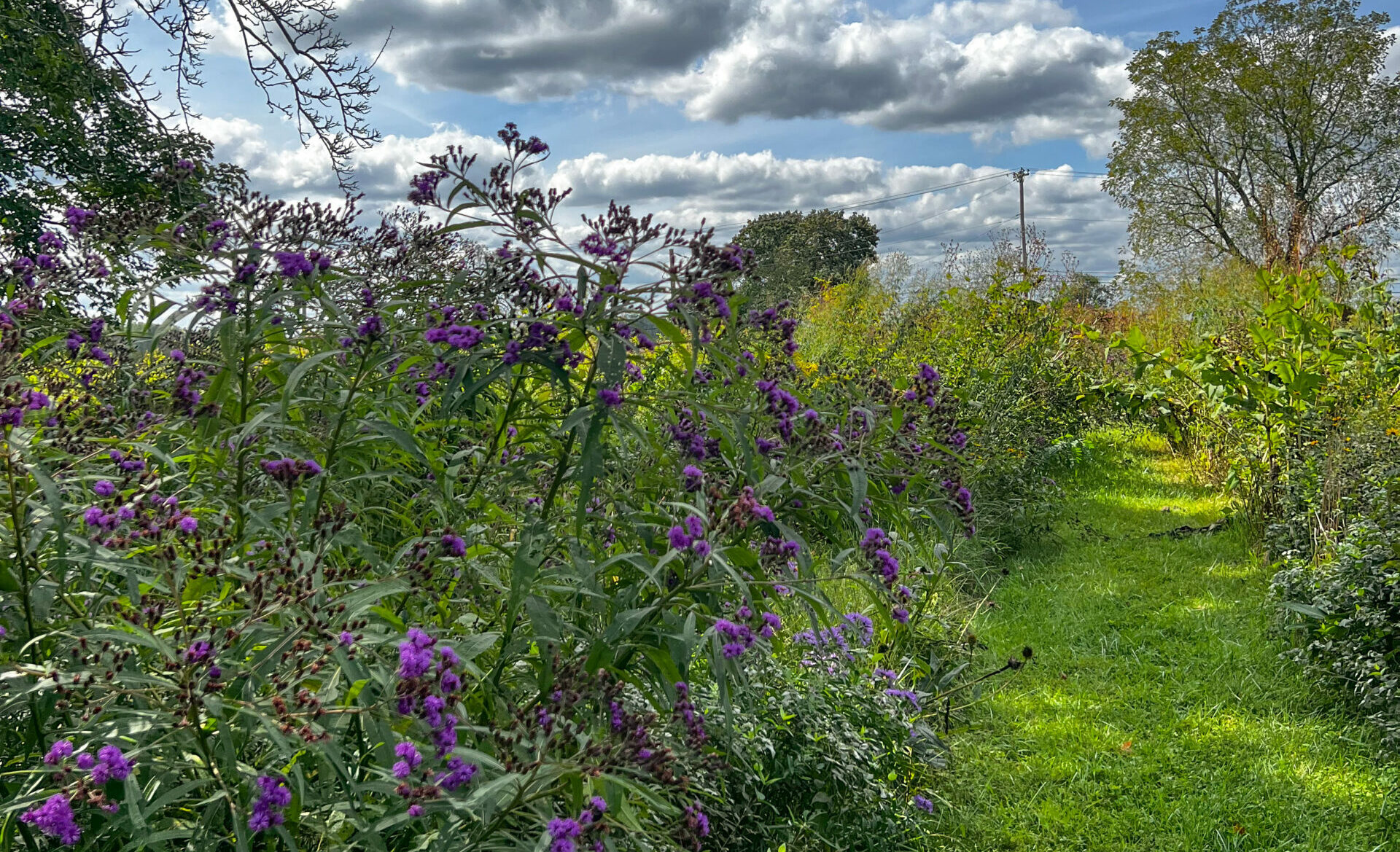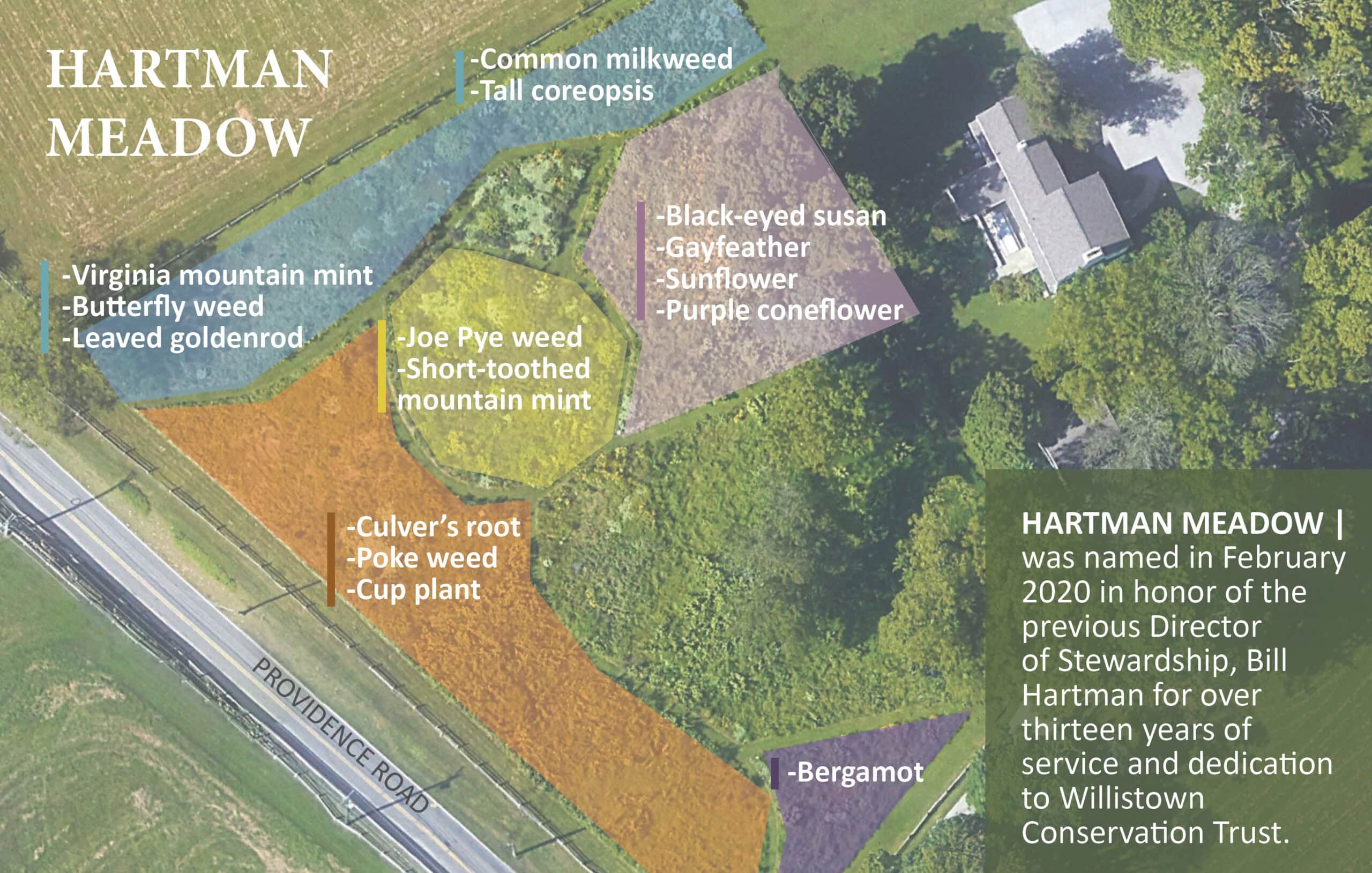
HARTMAN MEADOW AT WCT OFFICE | INFORMATION
Address: 925 Providence Road, Newtown Square, PA
Hours: Sunrise to Sunset
It has been well documented that mowed lawn areas are typically a monoculture of non-native grasses, which require a great deal of time, water, and chemicals to maintain while providing little benefit to wildlife. In 2008, the Trust decided to create a one-acre demonstration wildflower meadow to highlight a simple, attractive, and sustainable planted alternative to a manicured lawn. With over 48 million acres of lawn in the U.S., in addition to studies indicating worrying declines in bird and insect species due to habitat loss, it is time to begin viewing our lawns as places where conservation can occur.
Native plant species provide cover and seeds for birds, act as nectar and food sources for butterflies, bees, and other insects, and offer aesthetic diversity through their varied colors and textures. Over time, native grass and wildflower species in a meadow generally out-compete the weeds, making the wildflower meadow far less maintenance-intensive than a pure lawn. The roots of established native plants reach deep into the earth, sometimes even mining groundwater, making a native meadow much more drought tolerant than a lawn. The establishment of these deep root systems can take 2-3 years, but the rewards are worth the wait.
To ensure the successful establishment of our meadow, we purchased about 800-1,200 landscape “plugs” (young plants) each year beginning in 2008, and planted them in manageable 20’ x 30’ plots, adding one new plot each year through 2017. In late April and early May, plugs were planted directly into the existing turfgrass by hand at a ratio of one per square foot; the turfgrass acts as a cover crop to discourage other weeds. Native grasses were incorporated as plugs or seeds into the plots along with the wildflowers. The plots are mowed only once annually, typically in late March/early April to provide food and cover for over-wintering bird species and other wildlife.


